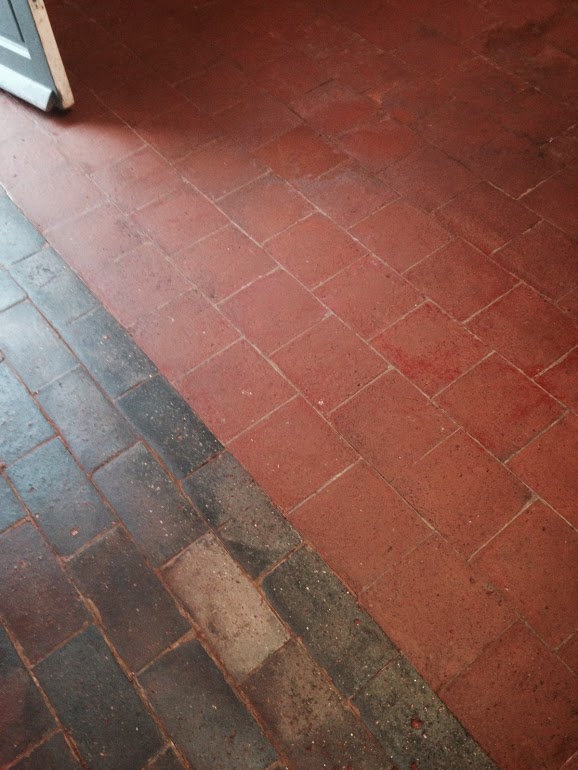

QUARRY TILED FLOORS FULL
That said, if you are on board for frequent touch-ups or re-application until your budget allows for a full bathroom remodel, this fix might be just the ticket! Tiled countertops, tub surrounds, or shower surfaces, while paintable, aren’t as practical surfaces for this treatment in the long-term because the paint is more likely to prematurely fade, peel, or blister with regular exposure to water. But your paint job will last the longest on tiled bathroom surfaces that receive low to moderate exposure to moisture-think bathroom floors (outside the immediate vicinity of the tub), walls, and backsplashes.

With the exception of glazed quarry tile (which doesn’t bond well with paint), you can apply paint to most popular types of tile: ceramic, porcelain, natural stone, or even un-glazed quarry tile. RELATED: The Best Painted Floors on the Internet It’s not practical to paint tile on all bathroom surfaces. Keep in mind that brighter paint colors are a better option for space-limited bathrooms darker paint absorbs light and can have the effect of making a small bath look more constricted. And, should your style change in three years, you can easily repaint. With paint, you can lighten, darken, or apply a pattern of your own design to your tile to fit any bathroom aesthetic, from a retro checkerboard pattern to a cool and contemporary geometric design. Still, those preset styles might not suit the design of your bathroom, go out of fashion after you’ve installed them, or, be simply too cost-prohibitive to install. Popular bathroom tile materials-ceramic, porcelain (a subset of ceramic tile), natural stone (marble, travertine, slate, granite, or limestone), and quarry tile-are sold in a number of solid colors or patterns. Solid-colored tile in bargain materials like ceramic falls at the lower end of these price ranges, while patterned tile in premium materials like marble falls at the higher end-as much as 15 times the cost! Patterns in painted tile floors, on the other hand, would only cost you double or triple the expenses for materials (depending on how many colors) and time. Retiling a tub surround or walls of a shower stall between 9 and 13 square feet, too? That’d be another $400 to $1,300, according to the online planning tool,. Frugal do-it-yourselfers can spend as little as $100 to paint 100 square feet. Meanwhile, depending on the tile material, a DIY retiling can cost anywhere from $100 to $1,500 for a typical bathroom floor measuring 35 to 100 square feet. Unsurprisingly, then, it’s the most budget-friendly way to refresh bathroom tile that isn’t cracked, crumbling, or otherwise structurally compromised. You’ve heard it before: Paint is an economical material. Painting bathroom tile is much cheaper than retiling.


 0 kommentar(er)
0 kommentar(er)
